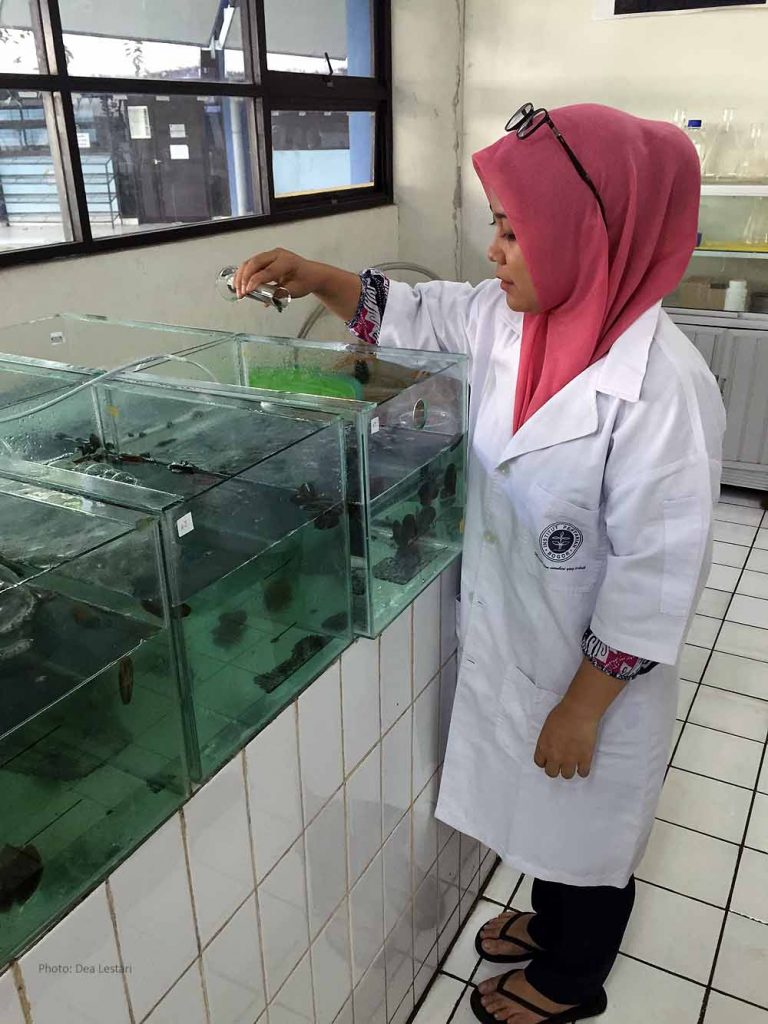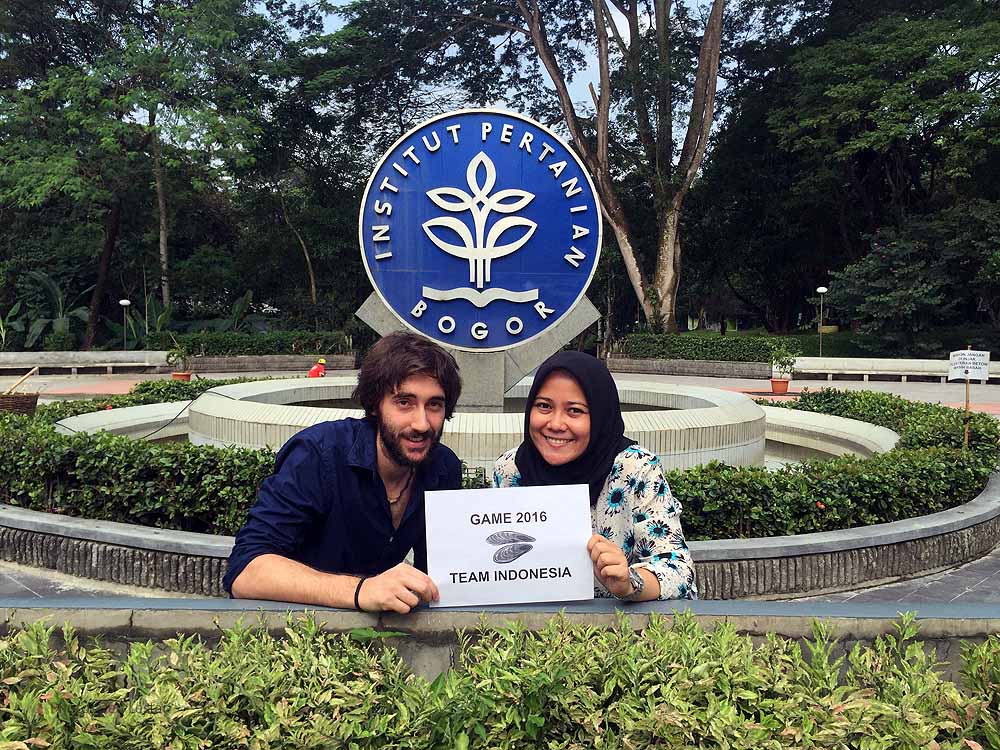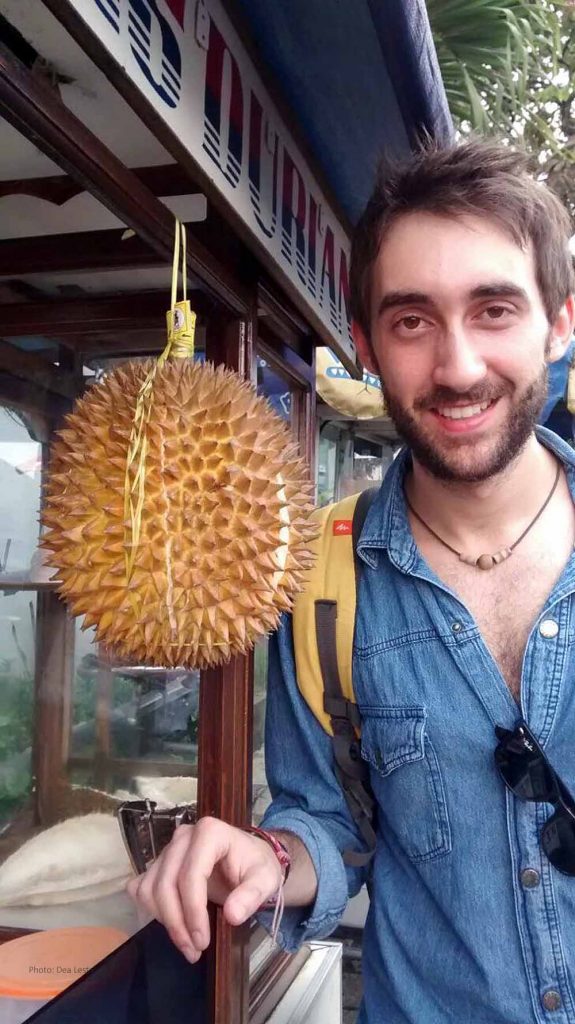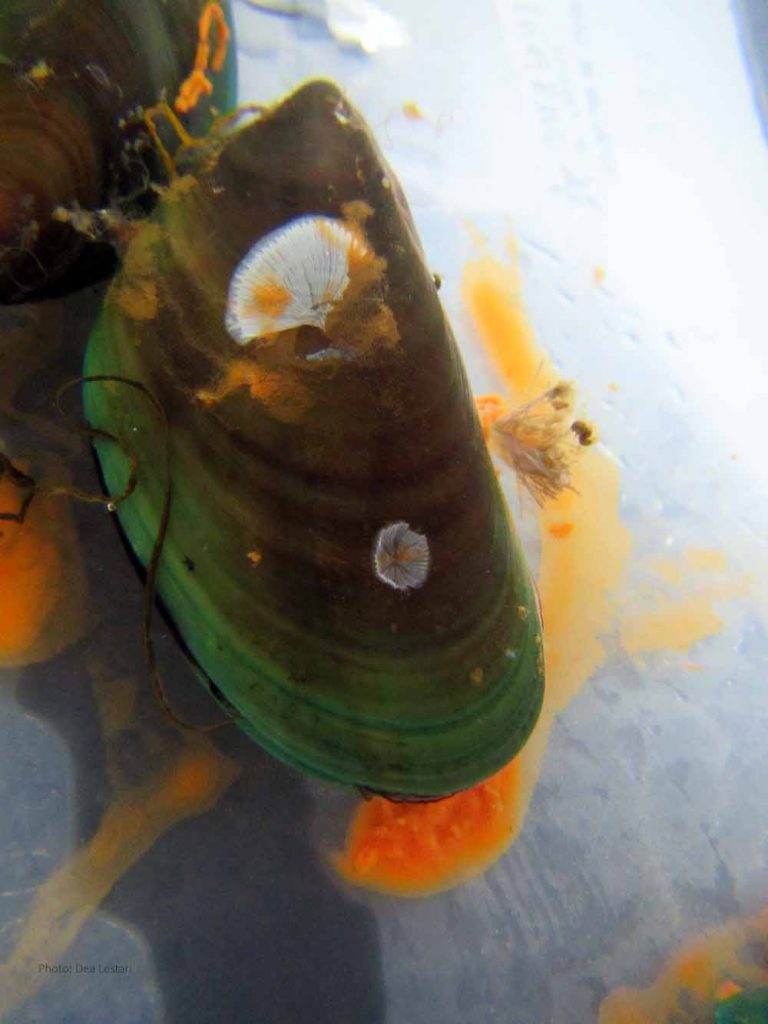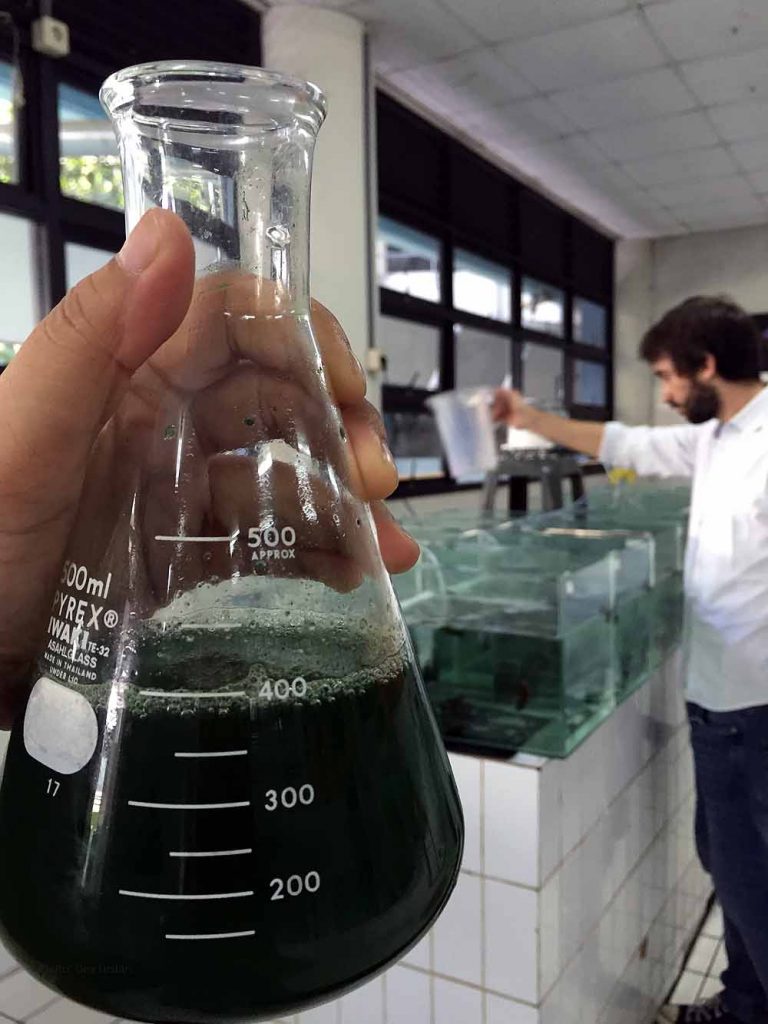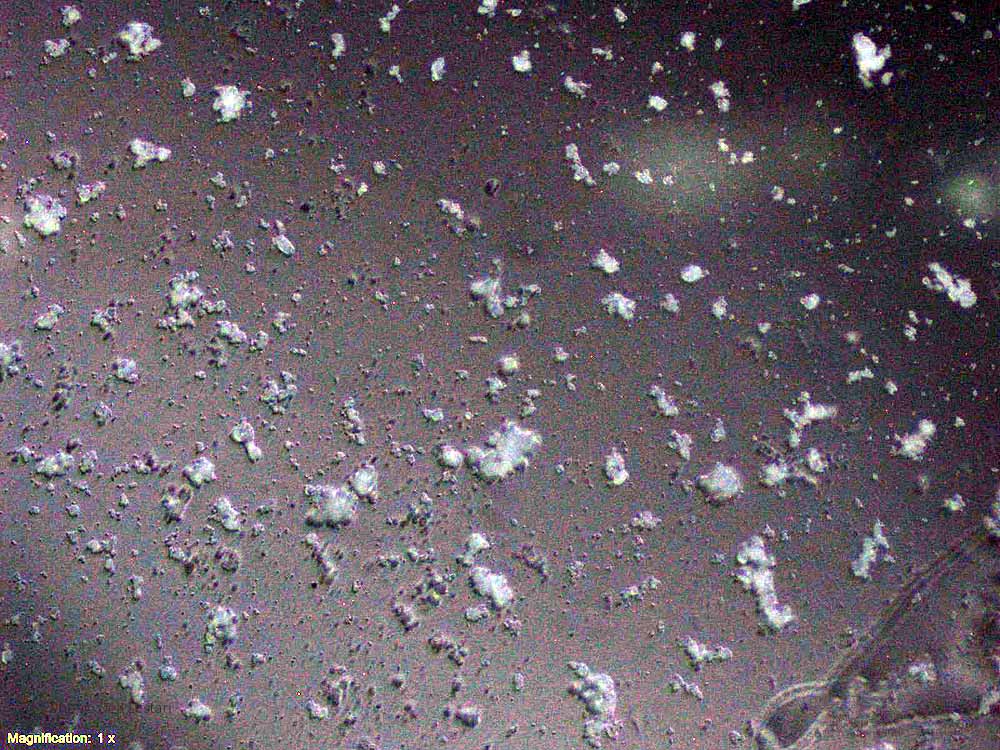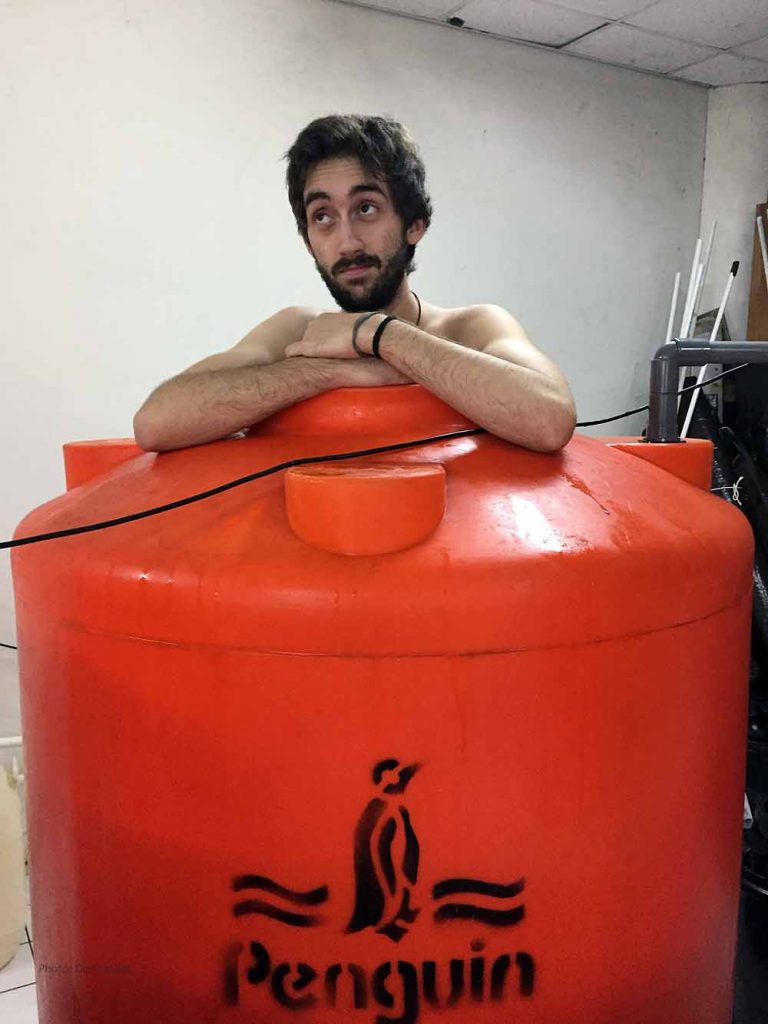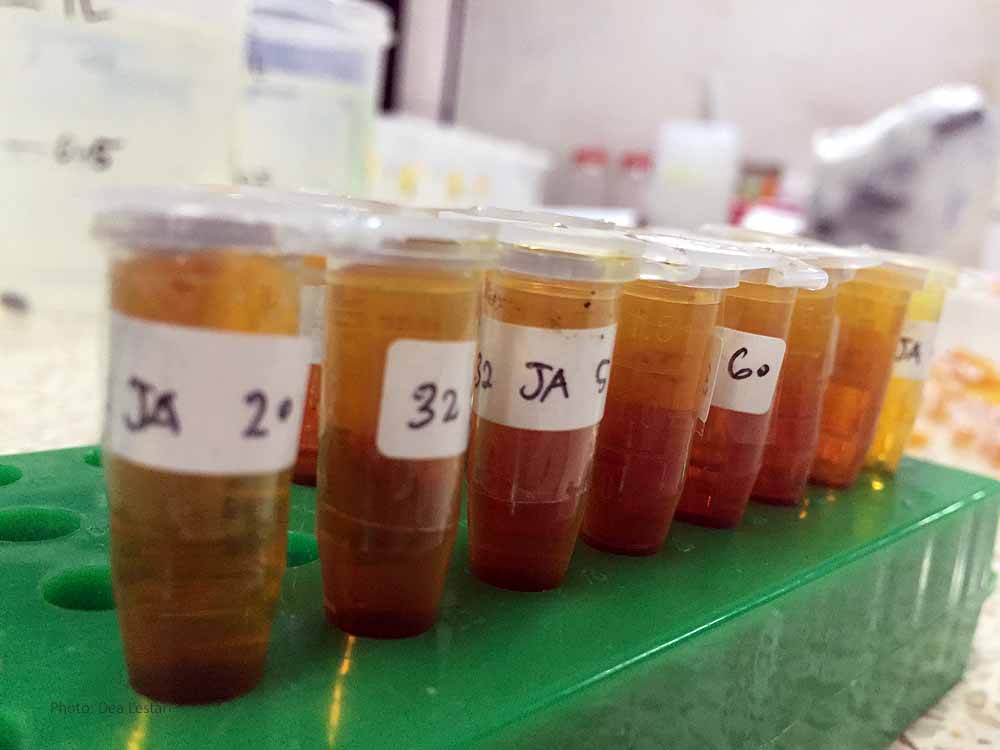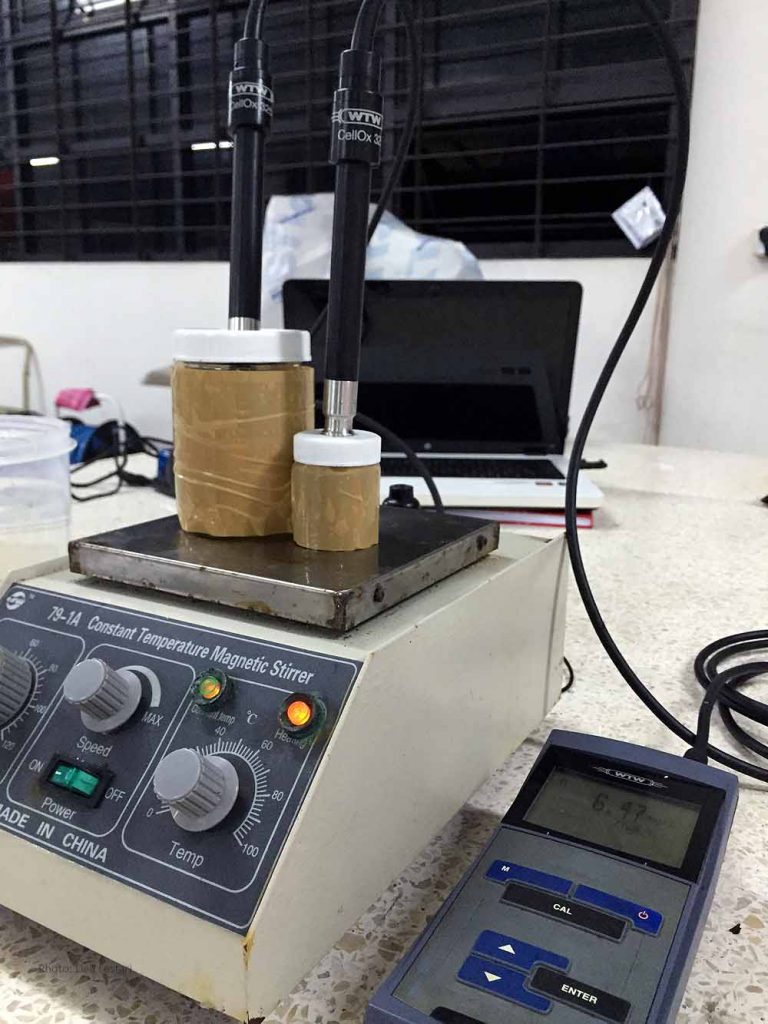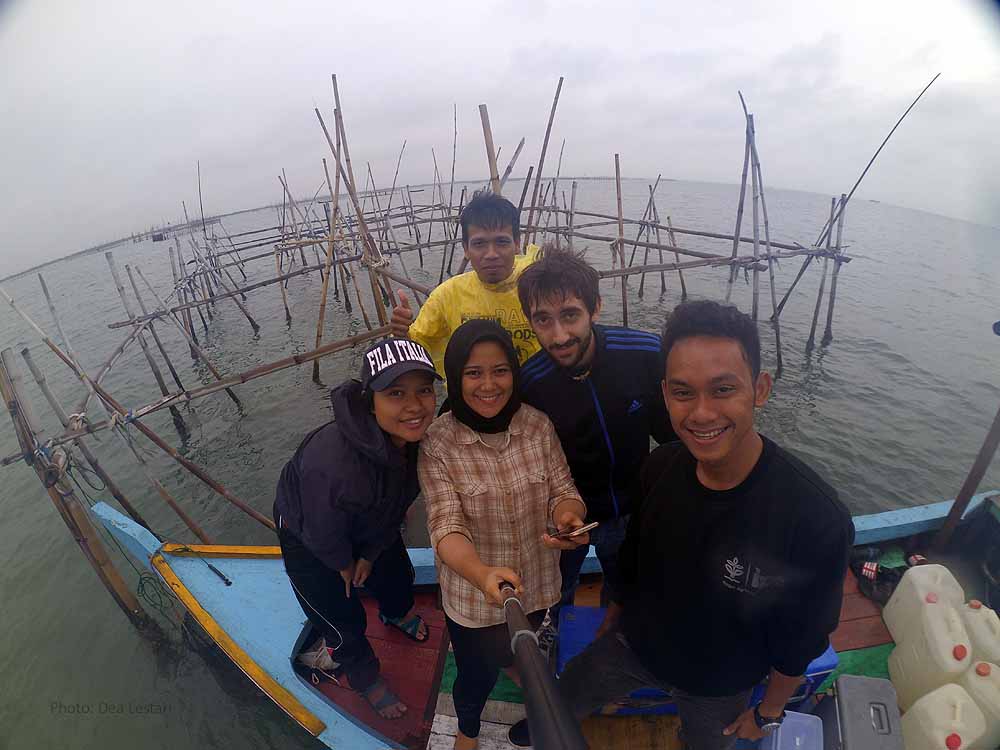Hi there! We are Hernán and Dea from Team Indonesia and we are going to tell you about the unique and amazing experience we have lived during the last five months, which we have entitled “The Parents of the Mussels”. The adventure started in April and the time has flown ever since. Hernán spent an exhausting one day trip which took him to Madrid first, then to Dubai and finally to Jakarta, where the suffocating heat of Indonesia welcomed him for the very first time. Once in Jakarta, he took a bus from the airport and went straight to Bogor Agricultural University, which is located in Bogor that is also known as “The Rain City”. Here, his partner Dea was waiting for him.
Hernán had never been to an Asian country before, so he experienced what people usually call a “cultural shock”. As he always says, everything is different here: 1) the culture – many different cultures and religions coexist in Indonesia, and, unlike some may think, people are incredibly tolerant and respectful here; 2) the food – wonderful dishes and amazing tropical fruits are so easy to enjoy here, but if you are planning to come here you better like spicy food; 3) the weather – you can cool off from the incredible heat by enjoying a long and strong tropical rain and, of course, 4) the people. Hernán was amazed since the beginning about the kindness and generosity of Indonesian people in general. They are always willing to help you with anything, and even if they cannot understand you they will find a way to help you. If there is something you should do when seeing an Indonesian it is smiling. Smile to them! They will appreciate it and most likely smile back to you (if they didn’t smile first). However, nothing he experienced gave him a bigger shock than trying Durian, which is called “The King of Fruits” by Asian people. We will just say it has a unique and indescribable taste. Awful or delicious… that’s for you to decide!
In any case, it is about time to tell you why we are here. Despite how great it would be to spend 6 months in Indonesia only for pleasure, we came here with a very different purpose. We both make up the Team Indonesia from the GAME project in 2016. Within the framework of the programme, a marine ecological research project is conducted every year that is coordinated by GEOMAR in Kiel. In 2016, identical experiments have been carried out in four further countries: Chile, Wales, Japan and Madeira (Portugal). Briefly summarizing, we are researching about how microplastics (very small particles of plastic about 1-50 µm in size), combined with high temperatures, may affect filter feeders such as oysters or mussels. In our case, we studied the effects on the Asian green mussel, Perna viridis, and we did it with both adults and juveniles individuals. The latter was done to find out if possible consequences of the plastic depend on the life stage of the animals affected.
About collecting mussels: You may know that Indonesia consists of thousands of islands (there are 17000 if you ask for accuracy), so any spot here should be as good as any other. Well, that’s true, but, however, you are overlooking a very important variable: the traffic. Traffic jams are one of the biggest problems in the country, especially for Java Island and its 140 million people. People deal with traffic every day here, but it is really something you’d rather avoid. To do this, we decided to rent a car and go to Banten Bay (West Java) very early – meaning we stood up around 3 a.m. Luckily, we succeeded in avoiding the traffic and we easily got to Banten, where a very trustworthy fisherman, who we know personally, was waiting for us. With his help, we collected the big amount of mussels we needed to start our experiment.
The bamboo structures, which are placed in the water for mussels to attach to, are called “Bagan”, and it is very popular among fishermen in Indonesia to culture mussels. They choose these constructions because of their low costs and because they are very effective for mussel cultivation. You need only one day to build a Bagan if you are with two or three people.
You are probably wondering what those strange things are that we are holding in hand on the picture below. These are ropes to which hundreds of juvenile mussels attached to. We easily collected these juveniles by just cutting this piece of a rope from a Bagan, taking it out of the water and selecting mussels of the size we wanted (11-14 mm).
Finally, after what seemed like an eternity to us, we got back to Bogor and as soon as we set a foot in our lab (Marine Habitat Laboratory), we started to cut, clean and separate our mussels and then we put them into aquaria. Due to the stress caused by car transportation and the heat several mussels started spawning. How nice! So… we were basically forced to wait for them to finish and change the water, totally tainted with an orange substance. It was probably this day when we became “The Parents of the Mussels”.
Working in our lab was not always an easy task. We needed to exchange the water every day because of the high temperatures in Bogor. They are accelerating the mussel’s metabolism, what, in turn, is provoking a fast decrease in water quality. After exchanging the water, we fed the animals twice a day, in the morning and afternoon. We used algae powder (Spirulina Sp.), which after being mixed with seawater, became a very good looking algal juice, used for feeding our dearest babies’.
Our research became more and more laborious every day, especially when we started working with the plastic. The trickiest issue was the microplastic incubation, which is a very important step in preparing the plastic for the experiment. The purpose of incubating the plastic in seawater is to mimic the natural process of weathering that goes along with the leaching of additives and with the colonization by bacteria. We tried different methods to optimize the process and this was accompanied by several long discussions with the other GAME teams and our supervisors. We finally agreed to use 5 L of seawater to incubate 50 gram of microplastics. For the experiment, we decided to use 4 different plastic concentrations including a control treatment level without microplastics (0, 2, 20 and 200 mg/L) and 3 temperature treatment levels: 28°C (which is ambient in West Java), 30°C (X+2°C) and 32°C (X+4°C). The plastic concentrations were chosen in correspondence to microplastic concentrations that we found in the literature.
We were curious about how microplastic really looks like, so we tried to see some particles under the microscope. Aaaaaaaaaaaaaaaand……here they are!!!!
Another important detail of our research is the replication. If you want your results to be robust and informative – statistically speaking – you need a lot of replicates. However, this could somehow turn against you! If you consider the fact that we used 10 replicates per treatment level and that we had 12 treatment combinations (plastic concentrations x heat stress levels), the beautiful number you get is 240 replicates/mussels to work with. Nice uh?! And the next photo shows our set up with which we were playing during the last six months. The pink lids mark control individuals, while blue (adults) and green (juveniles) lids were meant for replicates with plastic. So colorful!
Something very ironic about our faculty (therefore also about our lab) is that it is not placed at the coast. Actually, it is quite far away from the sea. This means that we need to buy the seawater from a provider in Jakarta, who has to transport it to Bogor in a very big truck. Storing water in those big tanks can give some additional work, such as cleaning the tank before filling it again. But, as you can see by the look on his face, Hernán did not mind it a bit!
On the 6th week of our experiment, our most important task was measuring several variables such as filtration rates respiration rates or byssus production (threads the mussels use to attach to the substrate), so it was not rare for us to spend the whole day in the lab (sometimes from 7 a.m. until 3 a.m). Can you imagine?
Apparently, we were not the only ones getting tired during our measurements. Our oximeter got tired of measuring so many samples once, so it decided to stop working. We don’t like lazy oximeters tough, so after calibrating it again, it learnt the lesson, and it has never misbehaved again ever since!
Spending so much time measuring response variables in the lab can make you really hungry, so it was not surprising that the dried mussel tissue we used to measure the BCI (Body Condition Index) of the mussels looked even tasty for us. But don’t worry, we didn’t eat it!
We also found some time during our research to present our project in the monthly seminar at the Faculty of Fisheries and Marine Science. Students and lecturers from several departments came to know what we were doing in the Marine Habitat Lab, IPB. We got several questions in the end and also very interesting suggestions, of which many were useful for our experiment.
Being the parents of more than 200 children requires loads of food for us, to make sure our energy budget is always high enough to take care of them. That’s why we tried almost every food in Bogor. A good example was our visit of the Padang Restaurant, where you can enjoy spicy food that is so typical of the western part of Indonesia. You can choose whatever you want, but maybe you should go for Rendang. This is beef meat cooked for a long time and prepared with coconut milk. Delicious!
Luckily, we also found (though not much) some leisure time, and we tried to use it well by doing several activities, such as visiting the SeaWorld in Jakarta. Here, we had the chance to see the “Dugong”, which is a big aquatic mammal that feeds on seagrass. Dugongs are known as mermaids according to the myth. We also went to the botanical garden in Bogor and went even diving on the Pari Islands!
We would love to keep sharing this amazing time with all of you, but September is almost over, which means our experiment will be finished real soon. We are going to miss everything here (yeah, even the lab) and of course will remember every second we spent together during the last six months.
Before concluding, we would like to thank both our supervisors and friends who supported and helped us so much during this intense but wonderful time. Without them, nothing of this would have been possible. We love you all!! This is it for now, but we’ll meet soon again. So long!
